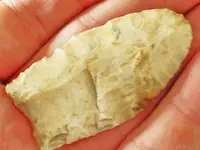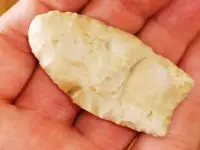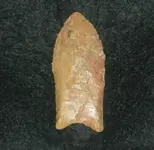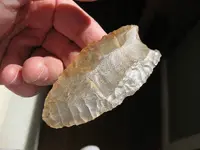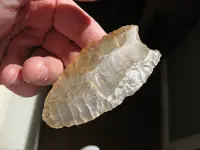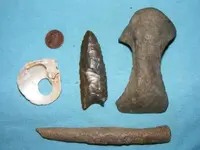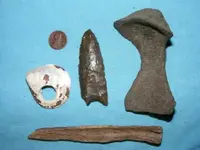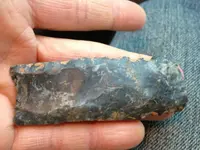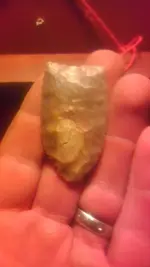You are using an out of date browser. It may not display this or other websites correctly.
You should upgrade or use an alternative browser.
You should upgrade or use an alternative browser.
Show off your Clovis Points
- Thread starter Get-the-point
- Start date
GL
Bronze Member
Yes rockman!!! That is still the best Clovis ever. It looks like a piece of ceremonial artwork.
civilman1
Gold Member
That is Beautifulrockman0_12 said:Here's the only one I've found. Stumbled on this last June. 2 5/8" long.
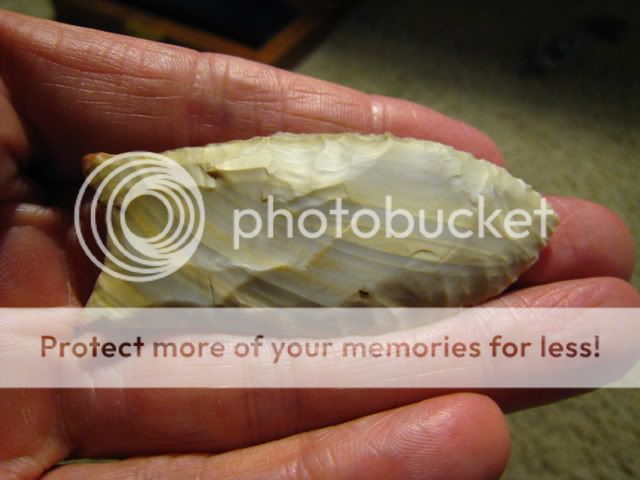
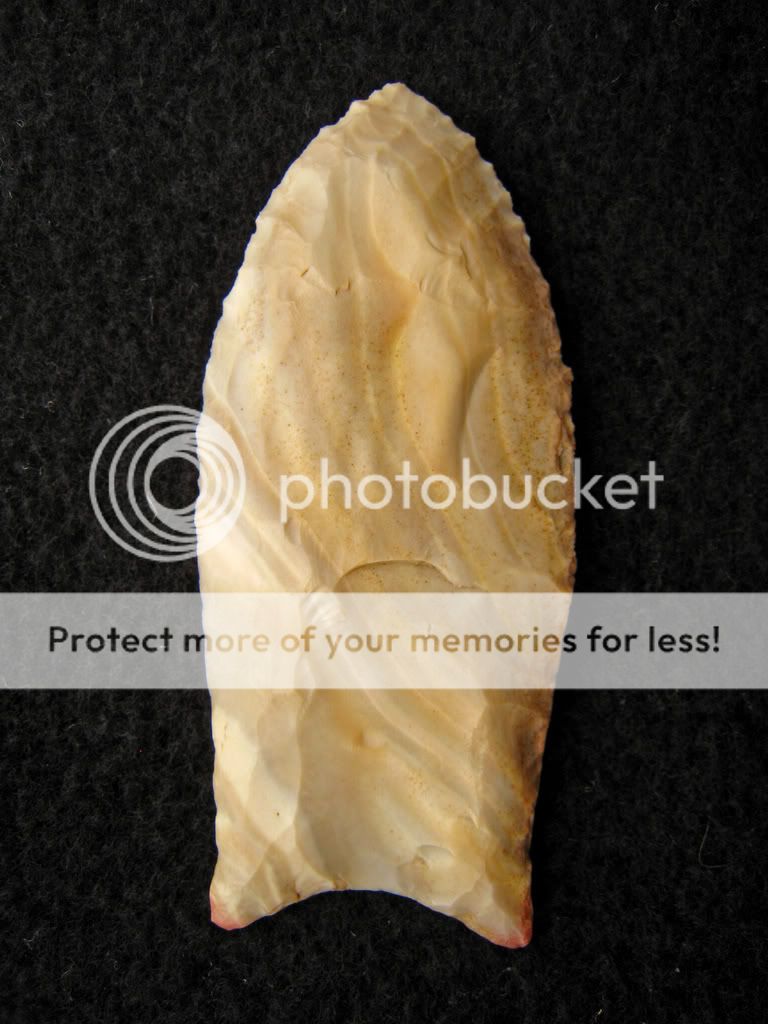
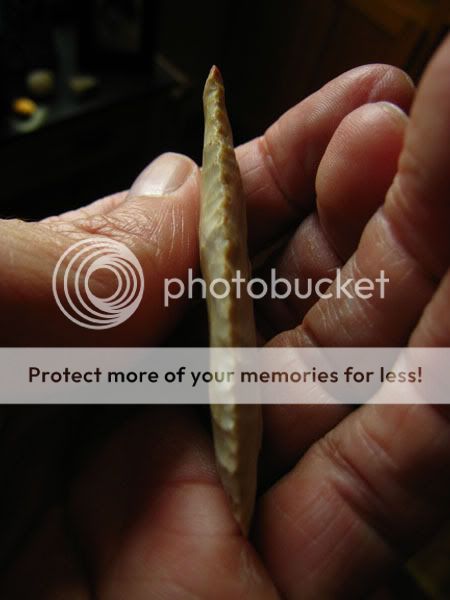
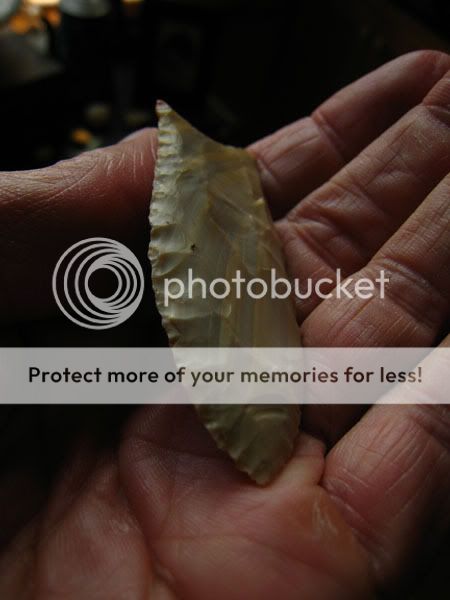

ShowmeMoflint
Sr. Member
Sorry but no clovis Why not me?
centfladigger
Hero Member
GL said:I saw one earlier so here's my Folsom. As soon as I get the money to spare I'll be having it authenticated.
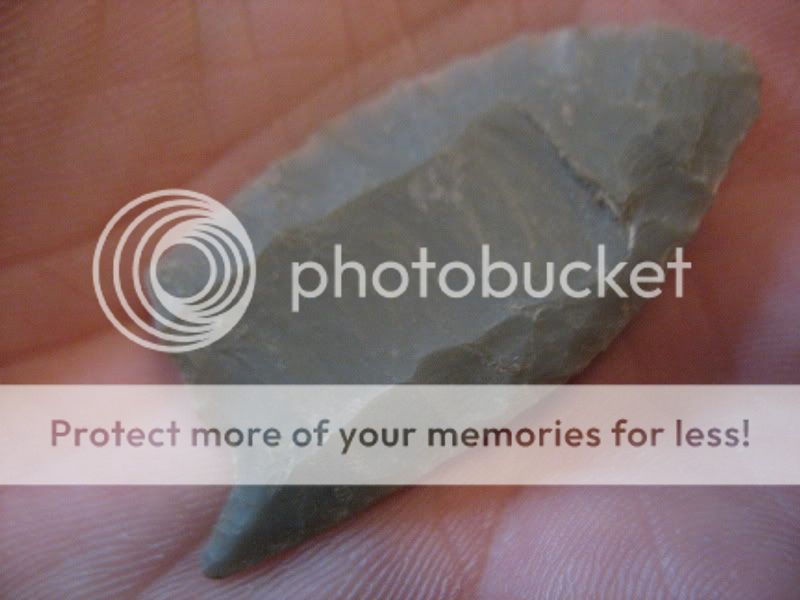
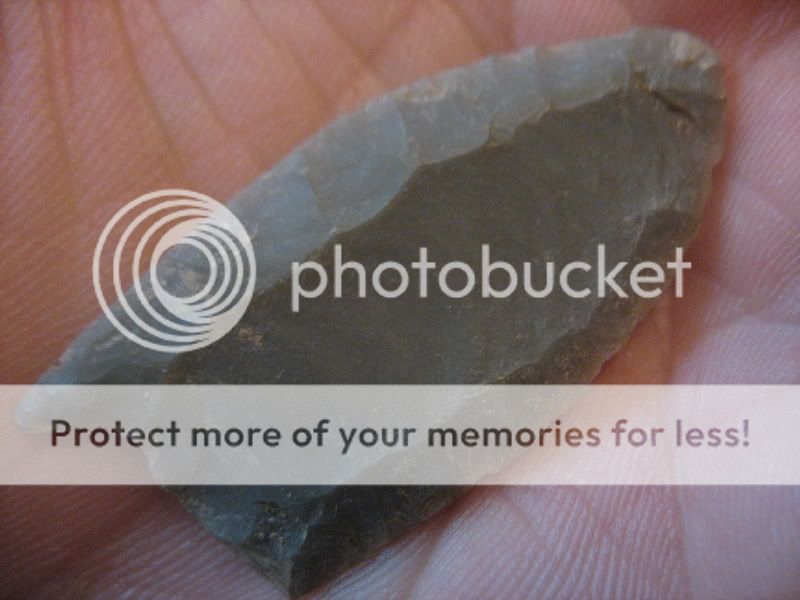
very nice piece, if you found it why would you pay to have it papered?
bravowhiskey
Bronze Member
- Joined
- May 29, 2009
- Messages
- 1,452
- Reaction score
- 952
- Golden Thread
- 0
- Location
- Brazos Valley, Texas
- Detector(s) used
- Minelab Explorer SE
this is the only one I have at this time...kinda like a 30 point buck, ha.


Regards,
BW


Regards,
BW
lostlake88
Hero Member
- Joined
- Dec 2, 2007
- Messages
- 636
- Reaction score
- 62
- Golden Thread
- 0
- Location
- The Queen City
- Detector(s) used
- Minelab Explorer II
ok_digger
Greenie
- Joined
- Mar 5, 2013
- Messages
- 15
- Reaction score
- 1
- Golden Thread
- 0
- Primary Interest:
- All Treasure Hunting
wow i found my first clovis point yesterday, location oklahoma, near the panhandle, and i will try to get a pic on here soon, i am still
excited, what does it cost to have it authenticated, lol i know it is, unless some one went out in the country and started laying
them around, lol, any way very nice pics
excited, what does it cost to have it authenticated, lol i know it is, unless some one went out in the country and started laying
them around, lol, any way very nice pics
Boxtopp
Jr. Member
- Joined
- Jul 11, 2004
- Messages
- 57
- Reaction score
- 24
- Golden Thread
- 0
- Location
- Lake county Ca
- Detector(s) used
- Se mxt tiger shark
All very nice thanks for sharing.
The Grim Reaper
Gold Member
- Joined
- Apr 3, 2008
- Messages
- 7,805
- Reaction score
- 7,074
- Golden Thread
- 0
- Location
- Southern Ohio
- Primary Interest:
- All Treasure Hunting
Since this topic was brought back up I'll post the one I found on March 3rd, 2011. It is made from Coshocton Flint and is fluted on both sides and ground nicely on both sides right down to where the two little indentations are. First whole one I ever found.
Attachments
-
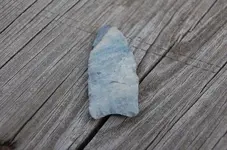 DSC_0072.webp61 KB · Views: 187
DSC_0072.webp61 KB · Views: 187 -
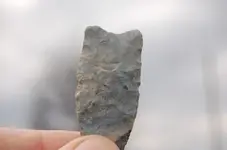 DSC_0081.webp10.4 KB · Views: 202
DSC_0081.webp10.4 KB · Views: 202 -
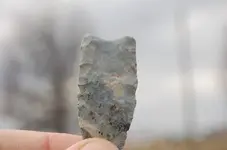 DSC_0080.webp11.2 KB · Views: 197
DSC_0080.webp11.2 KB · Views: 197 -
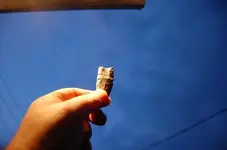 DSC_0060.webp8.5 KB · Views: 192
DSC_0060.webp8.5 KB · Views: 192 -
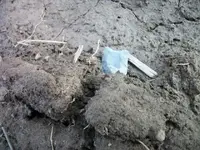 102_1239.webp86.5 KB · Views: 205
102_1239.webp86.5 KB · Views: 205 -
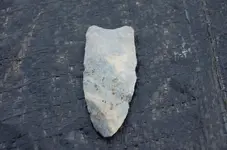 DSC_0075.webp37.1 KB · Views: 181
DSC_0075.webp37.1 KB · Views: 181 -
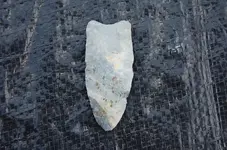 DSC_0074.webp65.1 KB · Views: 183
DSC_0074.webp65.1 KB · Views: 183 -
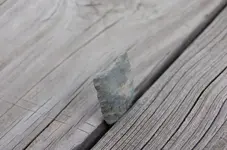 DSC_0071.webp33.3 KB · Views: 189
DSC_0071.webp33.3 KB · Views: 189 -
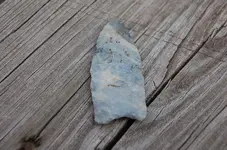 DSC_0073.webp59.9 KB · Views: 183
DSC_0073.webp59.9 KB · Views: 183 -
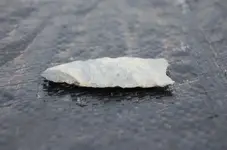 DSC_0078.webp20.4 KB · Views: 181
DSC_0078.webp20.4 KB · Views: 181 -
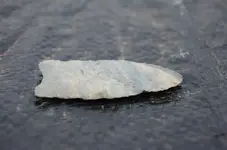 DSC_0079.webp18.7 KB · Views: 178
DSC_0079.webp18.7 KB · Views: 178
SonOfBeanman
Jr. Member
NC field hunter
Silver Member
Can't say that I have a true Clovis. I have a nice Folsom point. I say "I have" it's my dad's really. It's in my collection, we put all of our stuff together.
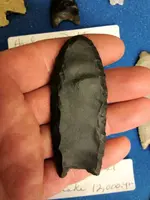
I have another fluted point that I found last summer. Can you guys name it?
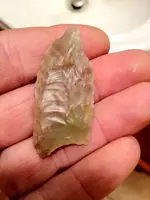
Here is one that is debated. Some say its paleo, personally I think it's a guilford that was made in an odd manner.

I'll post better pics of the last one in a few. Let me have your thoughts on it.

I have another fluted point that I found last summer. Can you guys name it?

Here is one that is debated. Some say its paleo, personally I think it's a guilford that was made in an odd manner.

I'll post better pics of the last one in a few. Let me have your thoughts on it.
CoonHuntenTN
Jr. Member
- Joined
- Mar 9, 2013
- Messages
- 20
- Reaction score
- 14
- Golden Thread
- 0
- Location
- middle TN on the Highland rim
- Primary Interest:
- Other
Here is mine i did not find it but i guess you could say i discovered it or saved it the guy that had it did not know what he had it was in a box full of points rattleing around like change
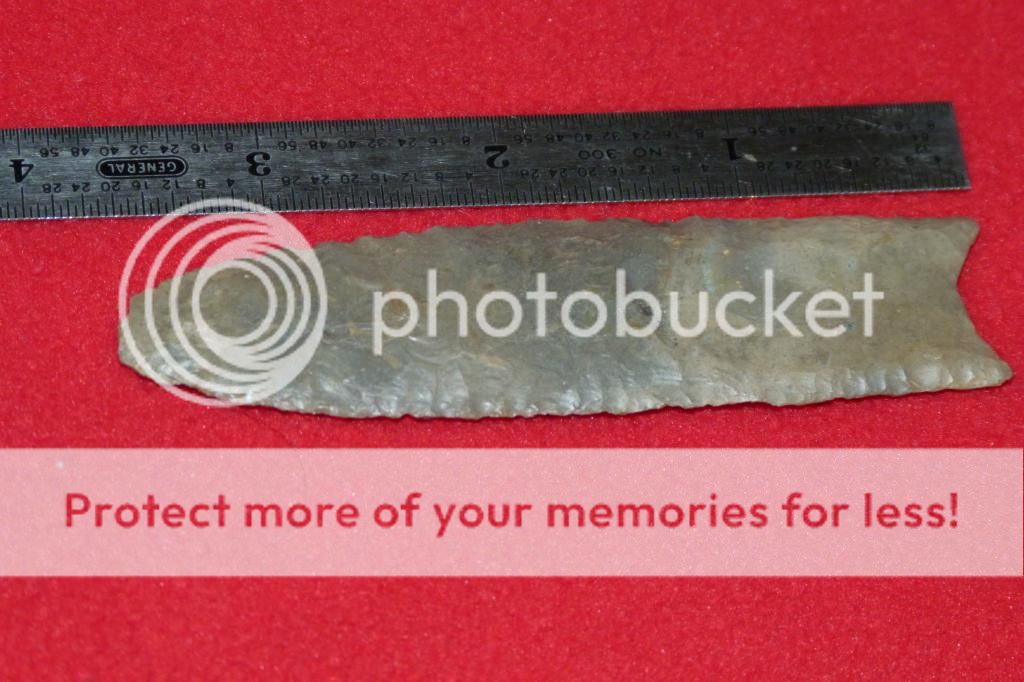
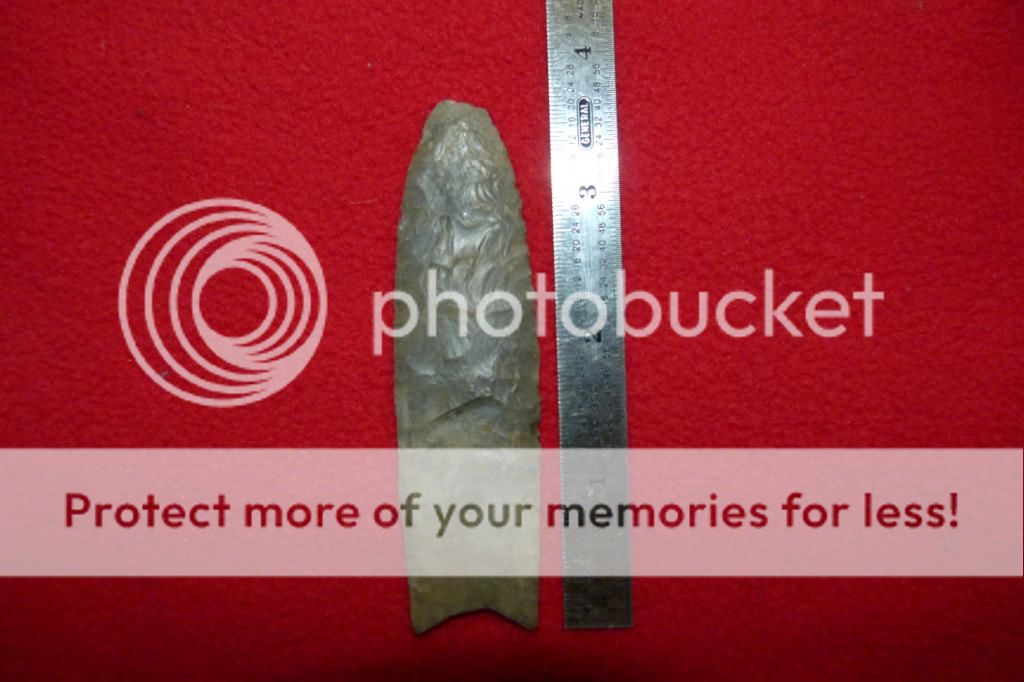
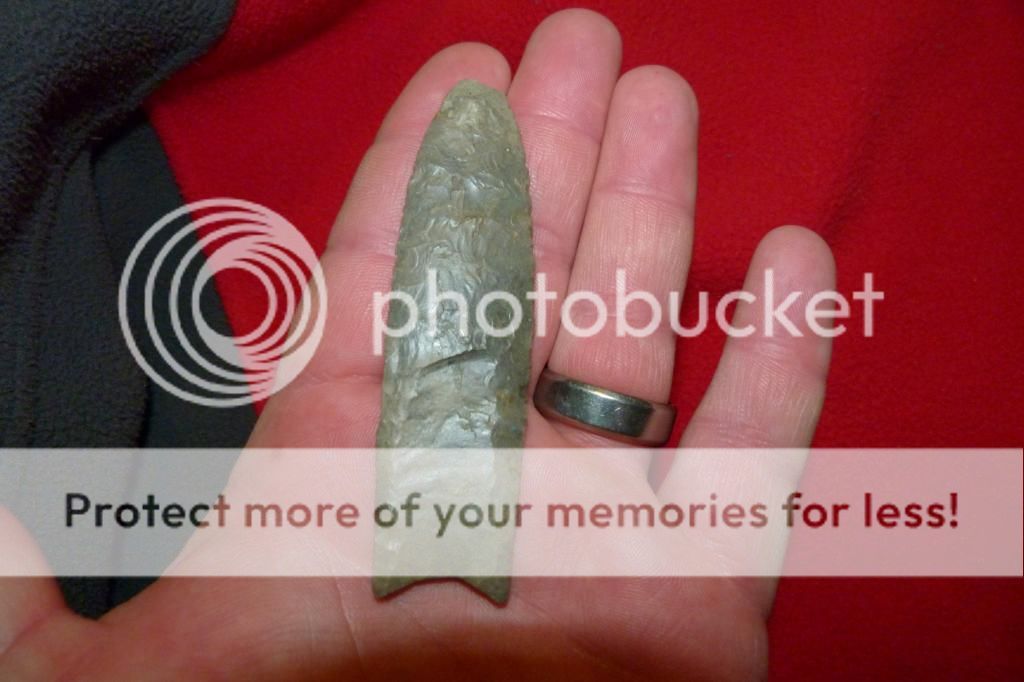
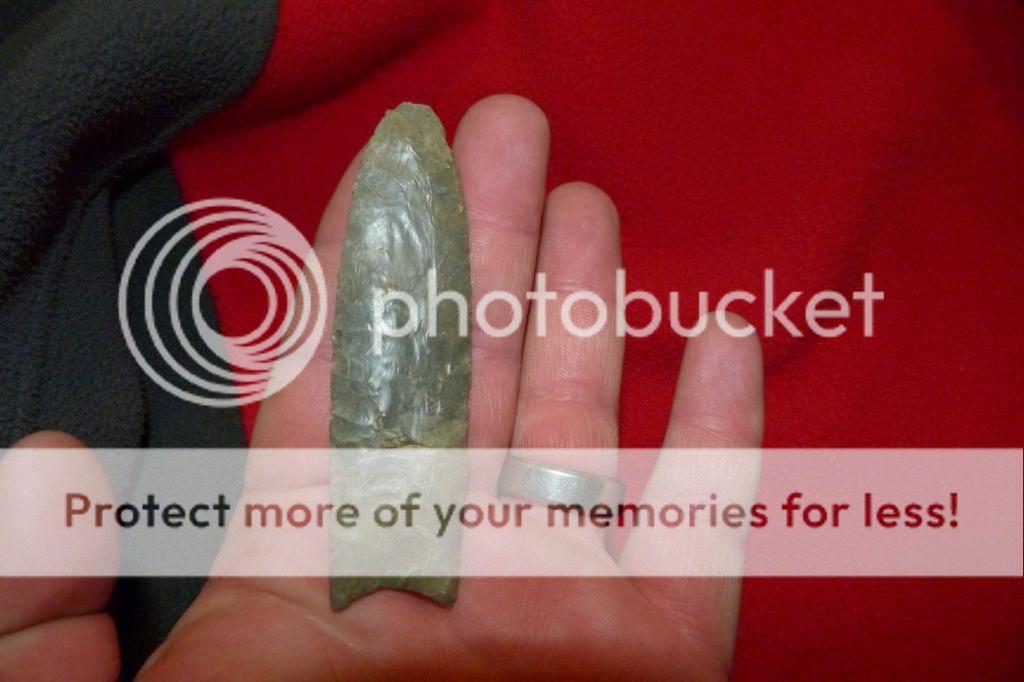
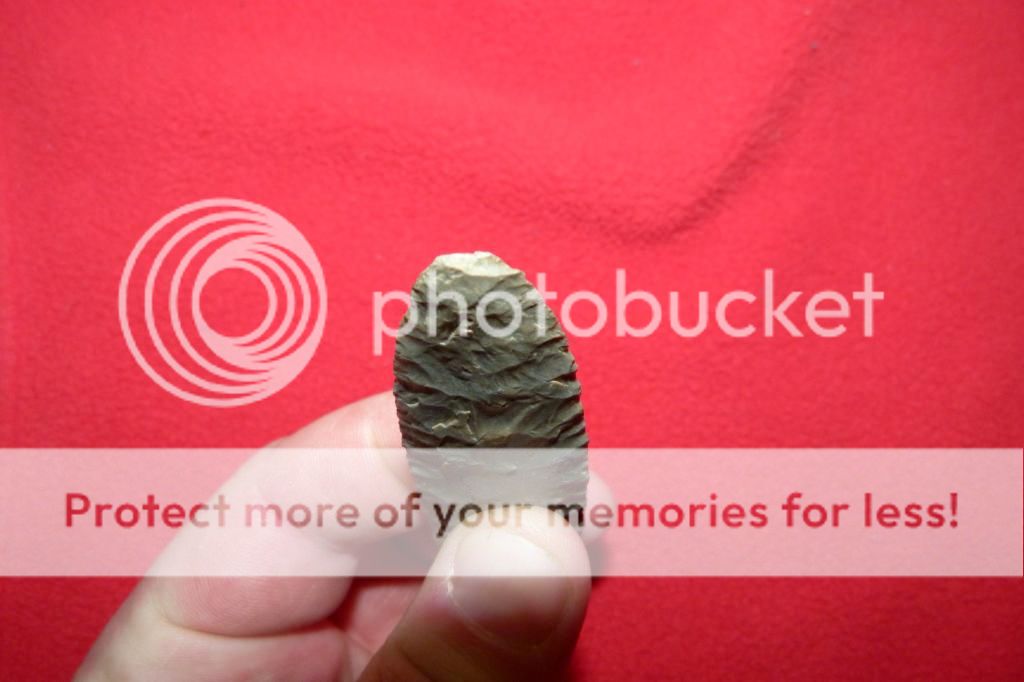





joshuaream
Silver Member
- Joined
- Jun 25, 2009
- Messages
- 3,170
- Reaction score
- 4,514
- Golden Thread
- 0
- Location
- Florida & Hong Kong
I thought the earlier discussion was interesting. I've been lucky and found several clovis points, like Neanderthal's story, I sold my first one without really knowing how significant it was. I sold it to John Baldwin when I was in highschool. I am still looking for it again, it'll probably cost me about 100 times what I sold it for and it'll be worth every penny to get it back. I visited with him before he passed, he remembered the point but didn't remember who he sold it to.
Counting brokens from three different sites, I've probably found close to 80 Clovis points and north of 400 artifacts (not including thousands of reduction flakes.) These are all surface finds, the bulk of the sites are completely eroded but there are still some areas that will eventually be excavated. These will be on display at the Paleo Odyssey later this year.
Base, nice flute.
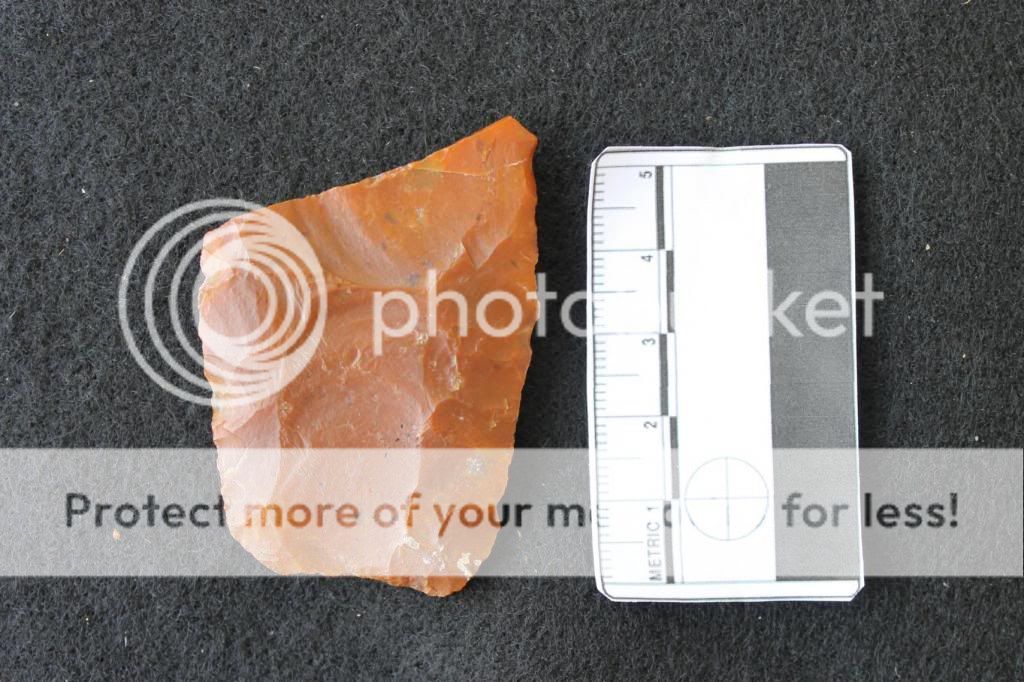
Tip, notice the outrepasse flakes that cross over from right to left.
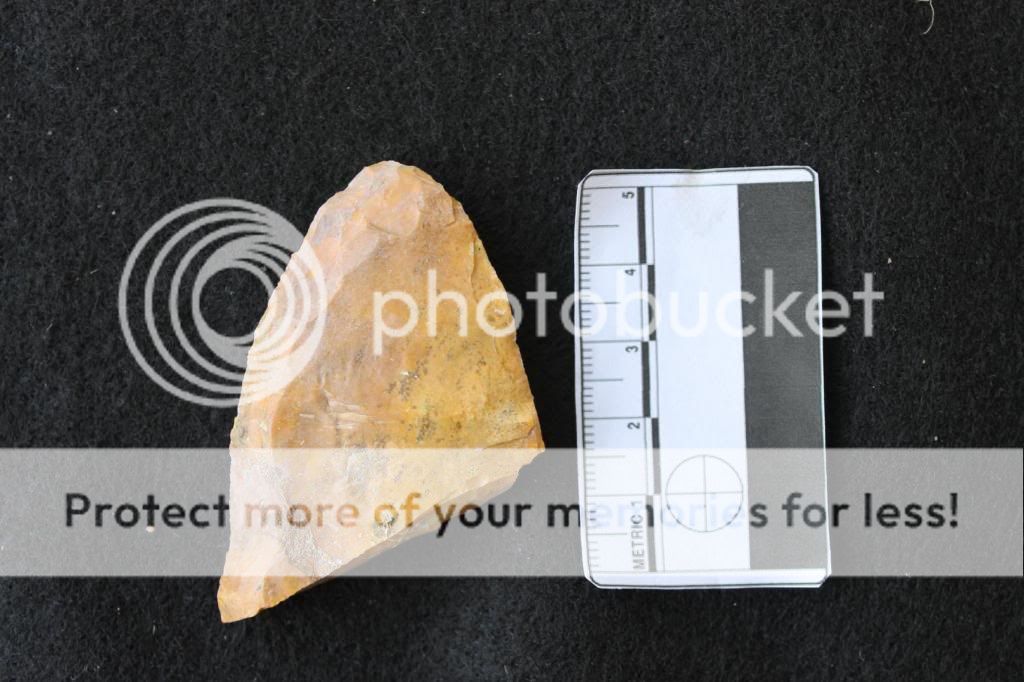
This is a base made from the same block of material as the tip. When held at an angle, you can see the 'nipple' platform for fluting set up just below the center plane of the point.
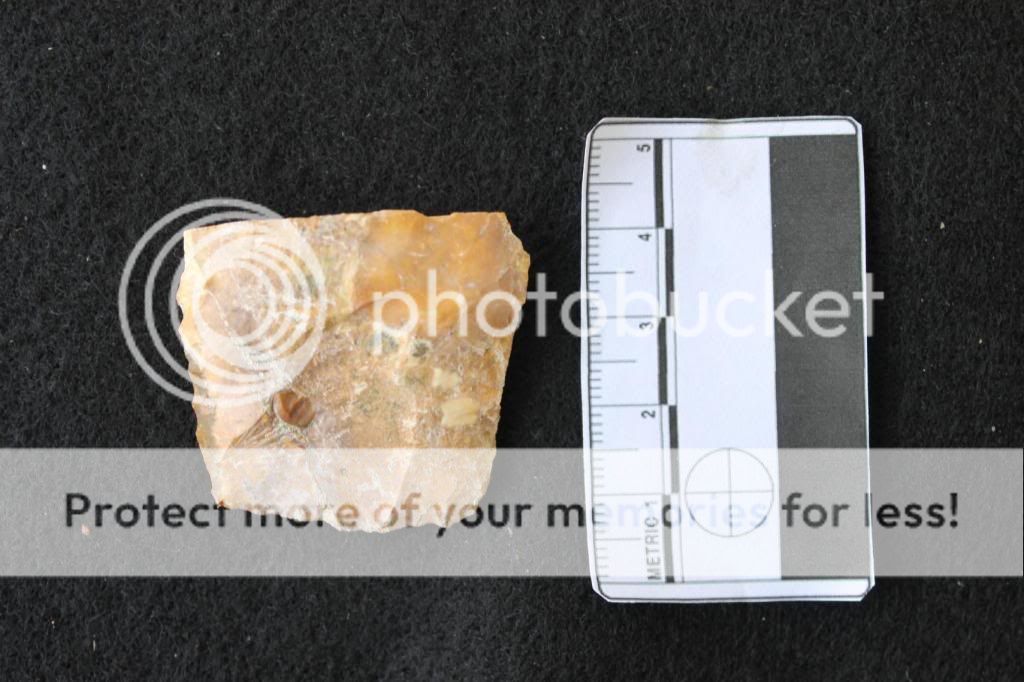
This knife/biface probably would have been north of 6 inches long.
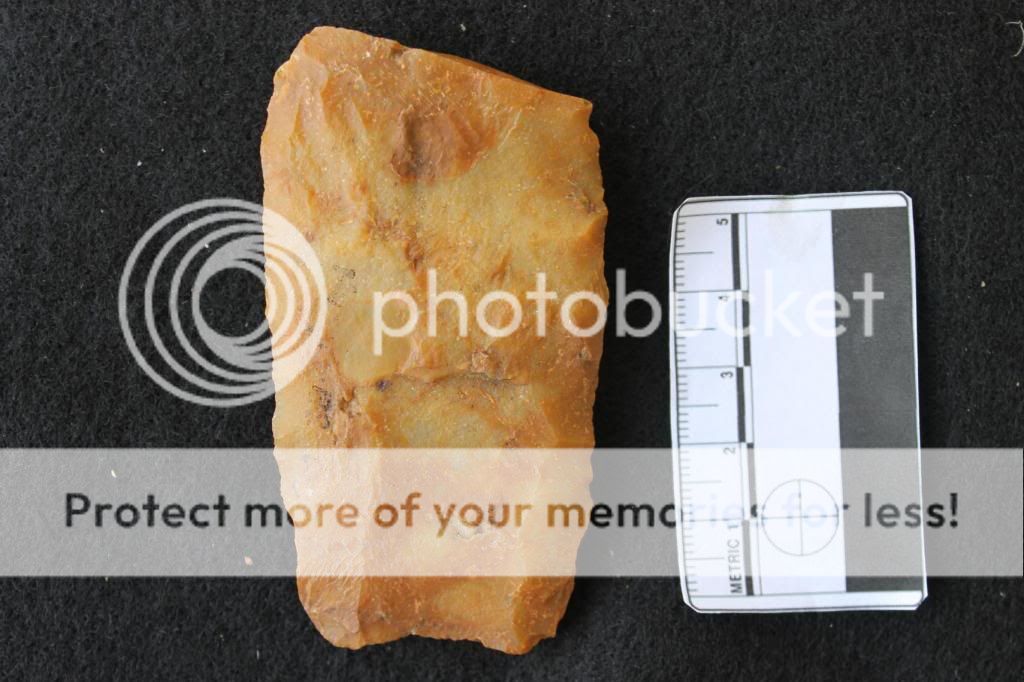
Here is a base with a very pronounced fluting platform.
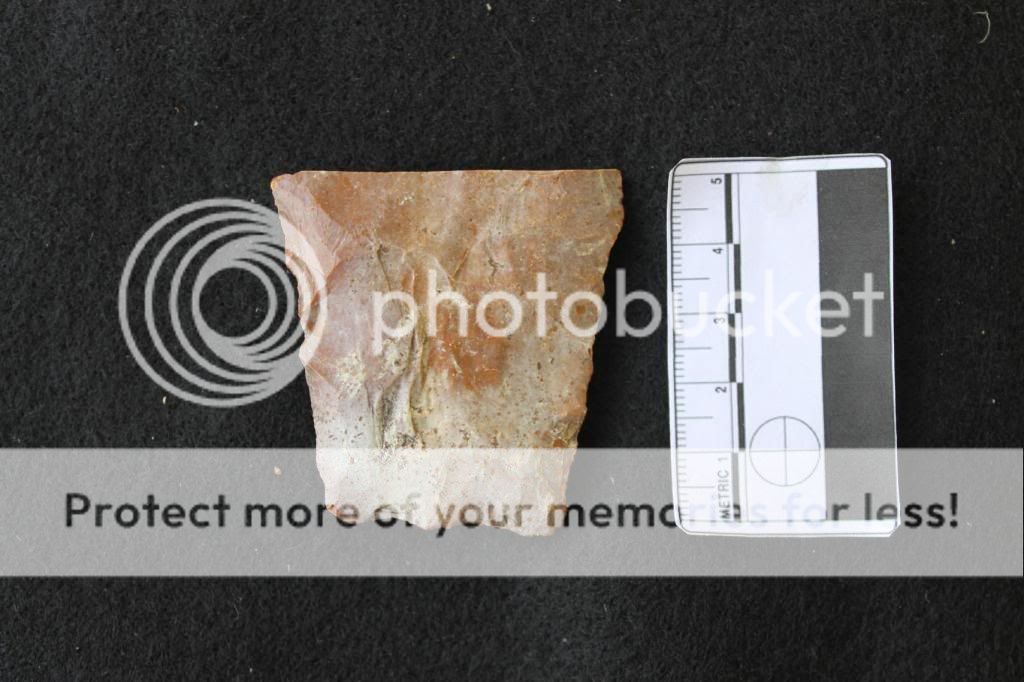
Counting brokens from three different sites, I've probably found close to 80 Clovis points and north of 400 artifacts (not including thousands of reduction flakes.) These are all surface finds, the bulk of the sites are completely eroded but there are still some areas that will eventually be excavated. These will be on display at the Paleo Odyssey later this year.
Base, nice flute.

Tip, notice the outrepasse flakes that cross over from right to left.

This is a base made from the same block of material as the tip. When held at an angle, you can see the 'nipple' platform for fluting set up just below the center plane of the point.

This knife/biface probably would have been north of 6 inches long.

Here is a base with a very pronounced fluting platform.

joshuaream
Silver Member
- Joined
- Jun 25, 2009
- Messages
- 3,170
- Reaction score
- 4,514
- Golden Thread
- 0
- Location
- Florida & Hong Kong
This piece shows a flute taken at a relatively early stage, with the scars from where the platform was struck.
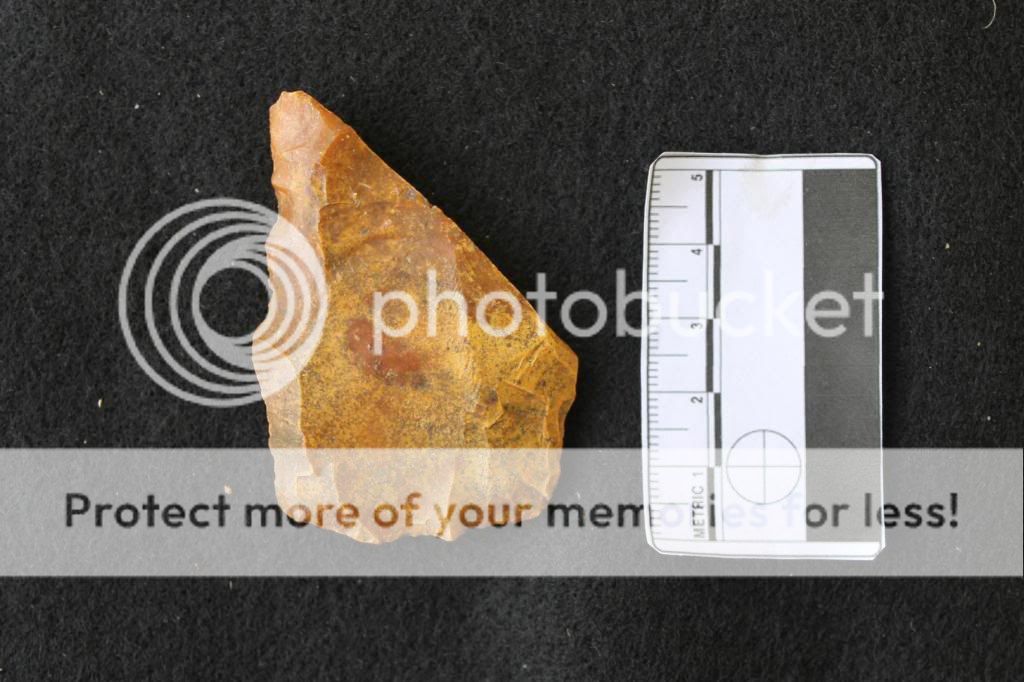
Same base as above, the reverse side shows a broad, shallow outrepasse flake.
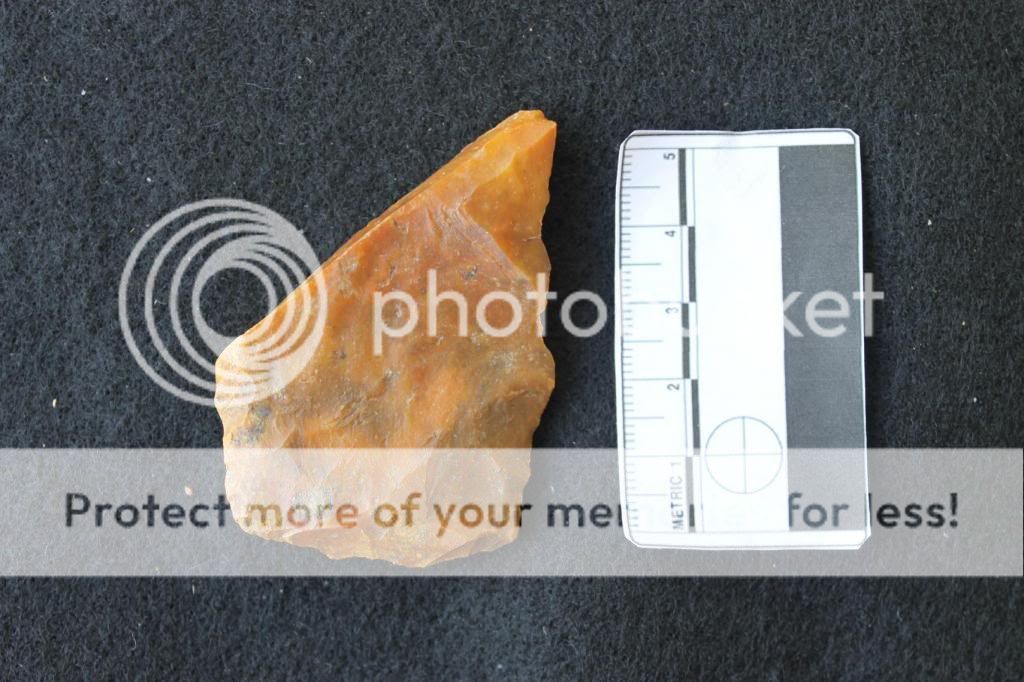
This is a base from a different site.
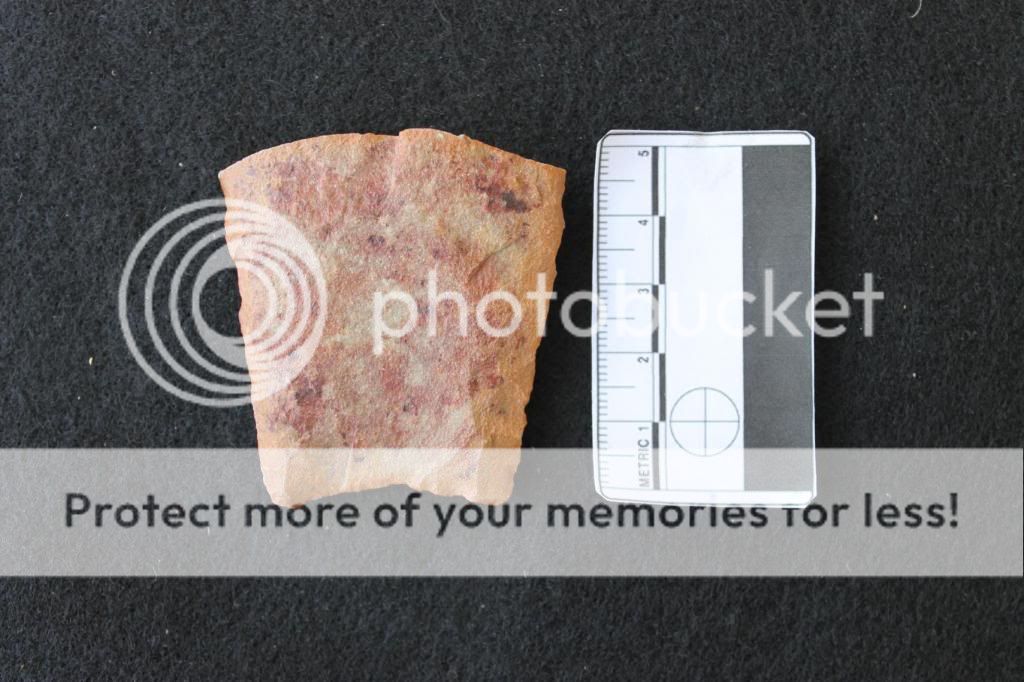
An early stage biface that was discarded.
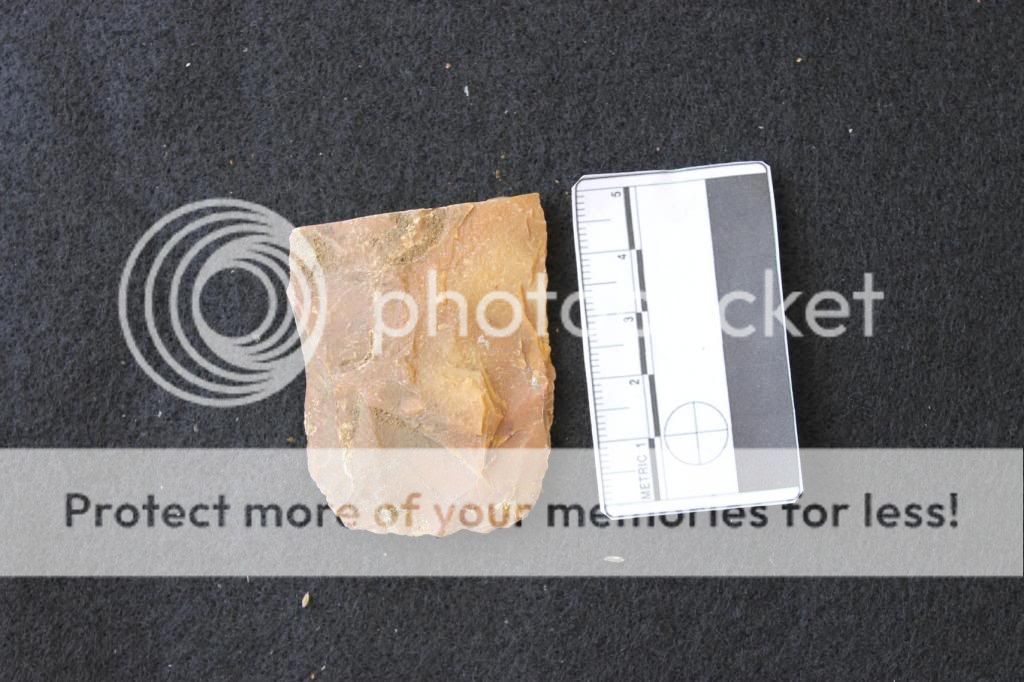
Another early stage biface that would have made a huge point.

Broken point, fluted both sides.
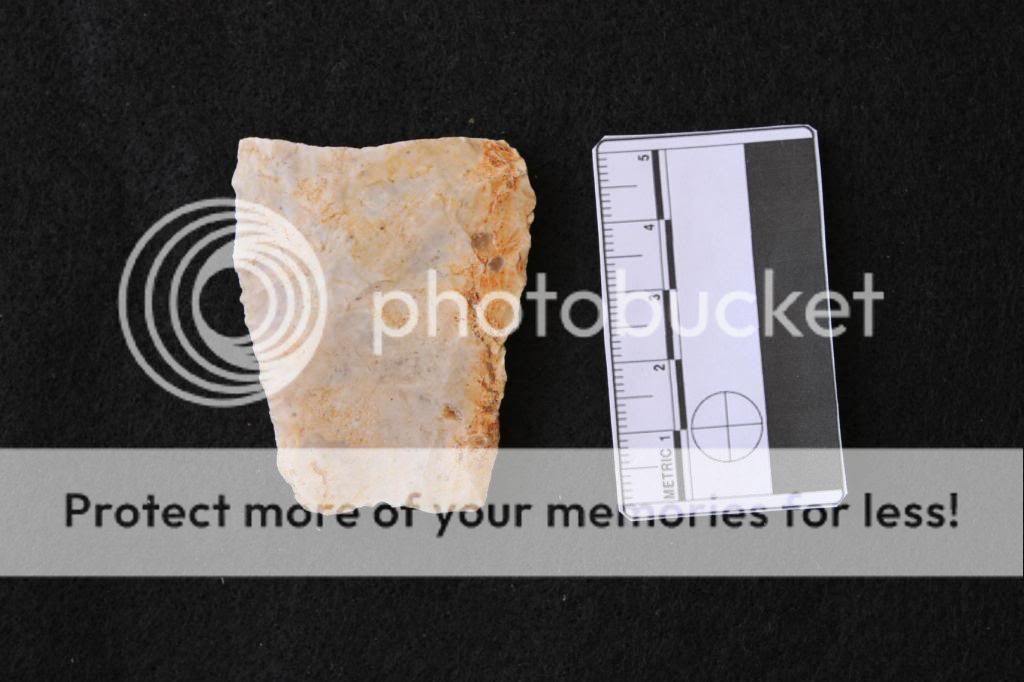

Same base as above, the reverse side shows a broad, shallow outrepasse flake.

This is a base from a different site.

An early stage biface that was discarded.

Another early stage biface that would have made a huge point.

Broken point, fluted both sides.

joshuaream
Silver Member
- Joined
- Jun 25, 2009
- Messages
- 3,170
- Reaction score
- 4,514
- Golden Thread
- 0
- Location
- Florida & Hong Kong
Broken before fluting.

A couple of shallow flutes.
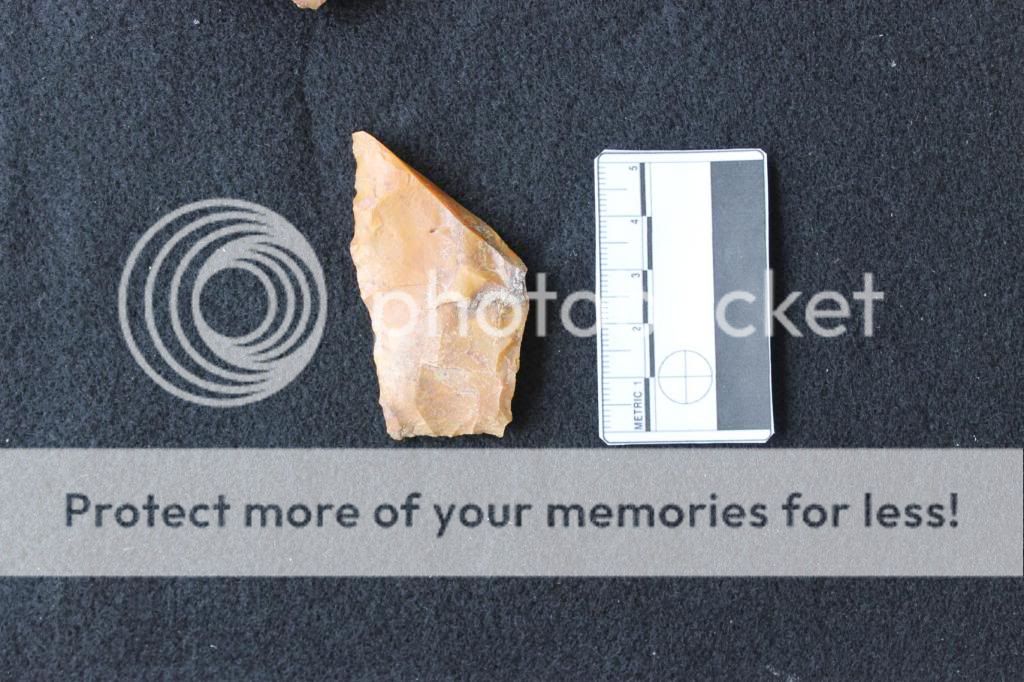
A broken platter biface.
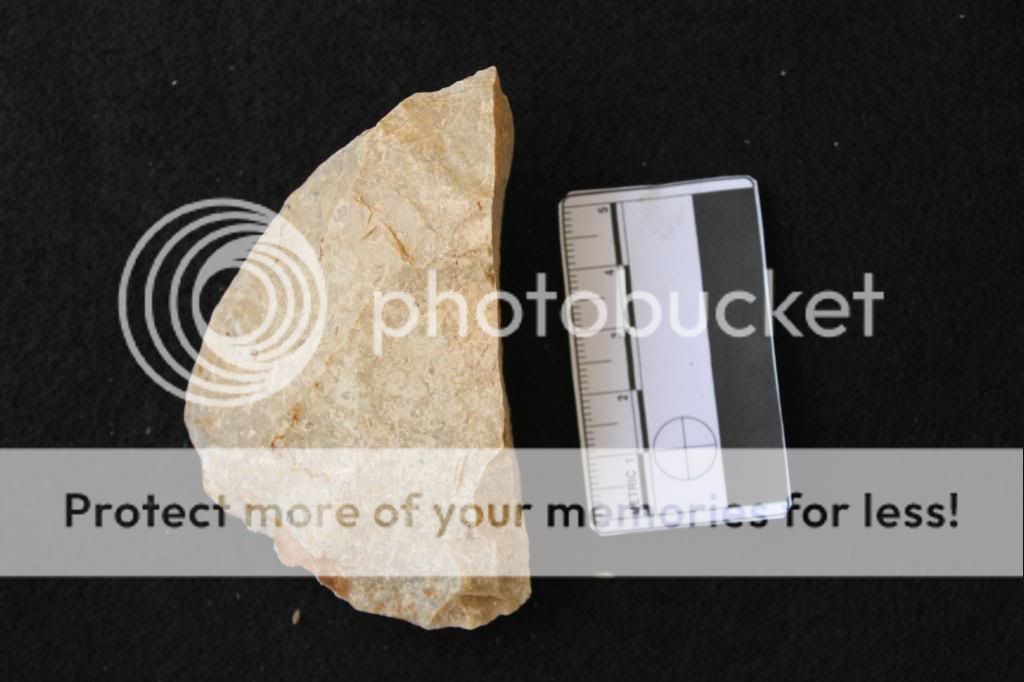
A broken biface.
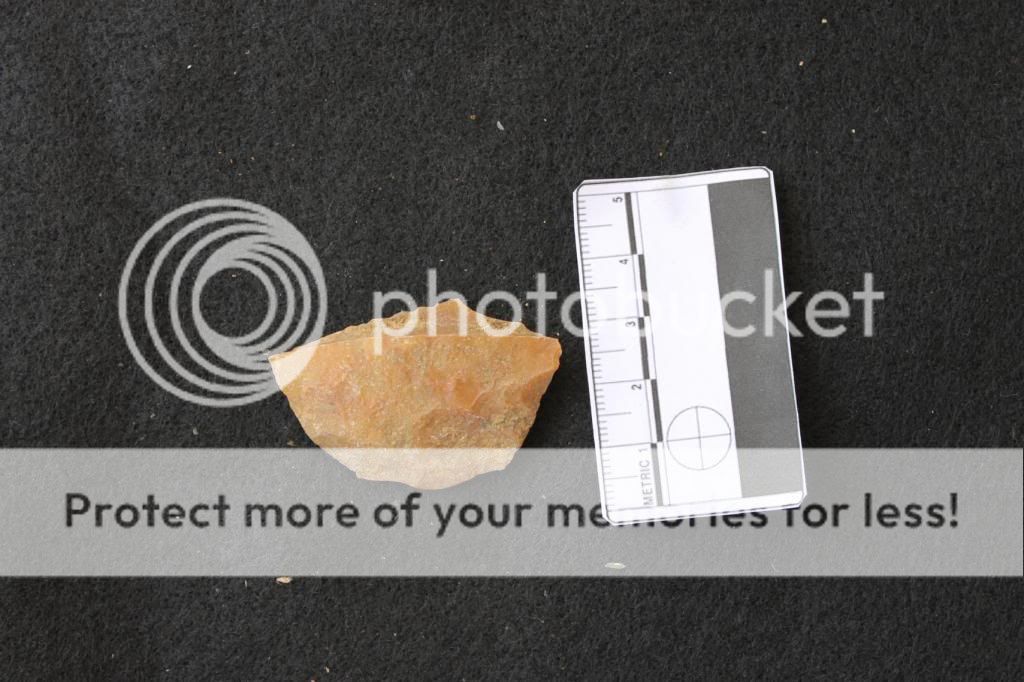
A broken platter.
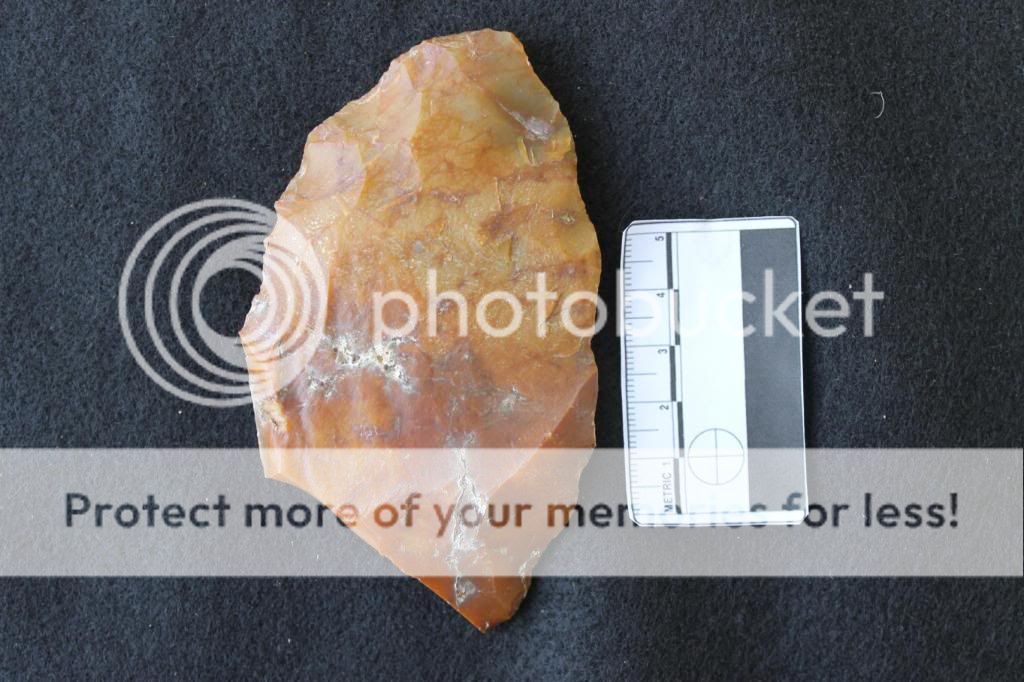
Reverse side of same piece.
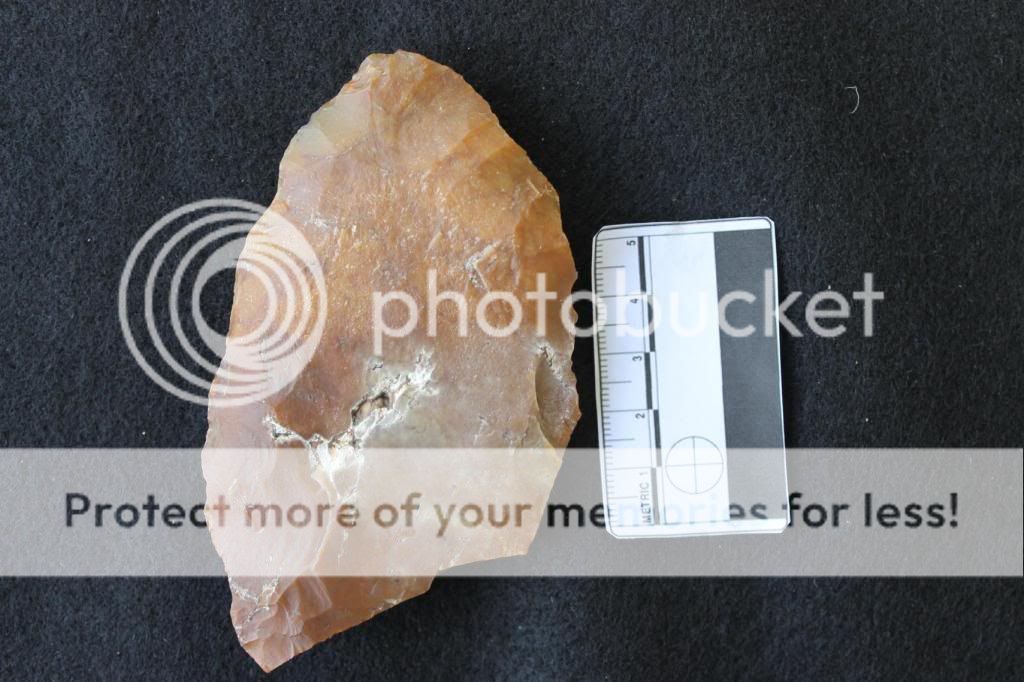
One wrong hit. This is a broken biface, a couple of knappers that have looked at this piece said the knapper had to use a lot of force at an odd angle to get the flake to spread like that. He must have hit it too hard and snapped the piece, and crushed the thin edge of the platform. This piece is folsom ultrathin thin, to go aggressive with the outrepasse flake is evidence of the confidence the knapper had and the fact he was sitting with walking distance of the quarry.
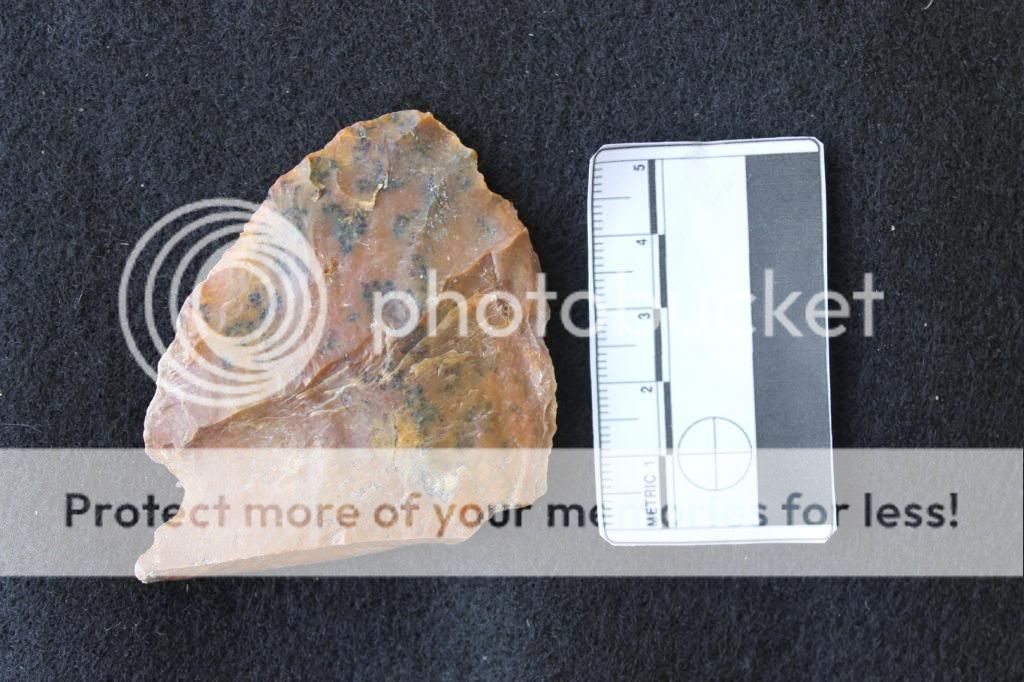

A couple of shallow flutes.

A broken platter biface.

A broken biface.

A broken platter.

Reverse side of same piece.

One wrong hit. This is a broken biface, a couple of knappers that have looked at this piece said the knapper had to use a lot of force at an odd angle to get the flake to spread like that. He must have hit it too hard and snapped the piece, and crushed the thin edge of the platform. This piece is folsom ultrathin thin, to go aggressive with the outrepasse flake is evidence of the confidence the knapper had and the fact he was sitting with walking distance of the quarry.

Last edited:
joshuaream
Silver Member
- Joined
- Jun 25, 2009
- Messages
- 3,170
- Reaction score
- 4,514
- Golden Thread
- 0
- Location
- Florida & Hong Kong
A couple of the more diagnostic clovis artifacts, the outrepasse flake tool!
This piece was trimmed. The platform would be on the right side (trimmed off and edges ground), the blade edge is on the left. Inside view.
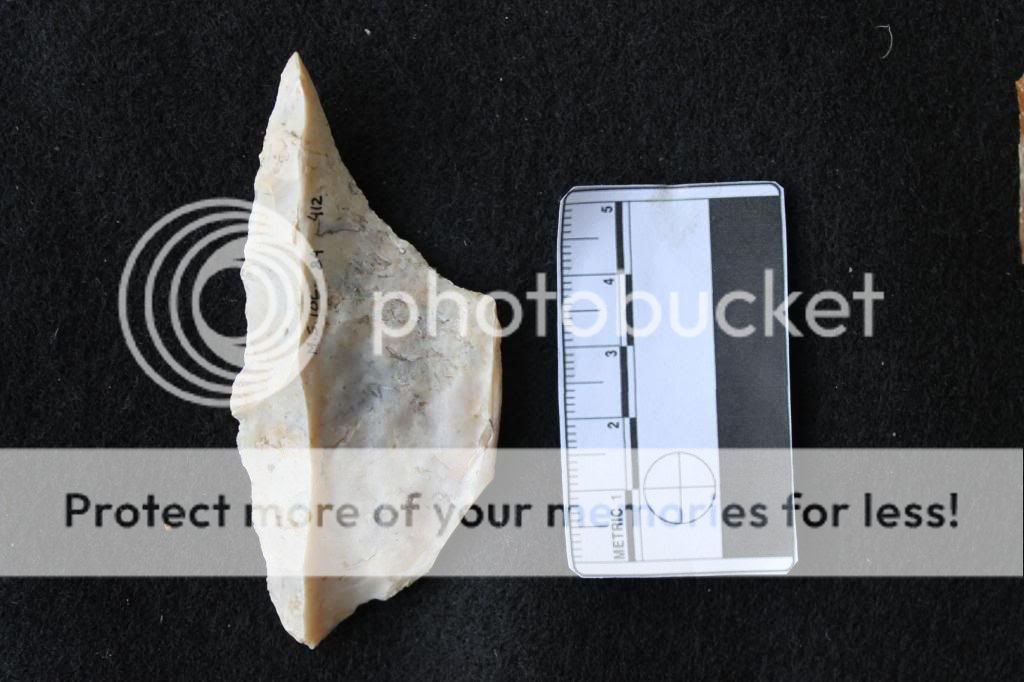
The same piece but showing the outside surface.

This is a outrepasse flake, platform at the top, opposite edge at the bottom.
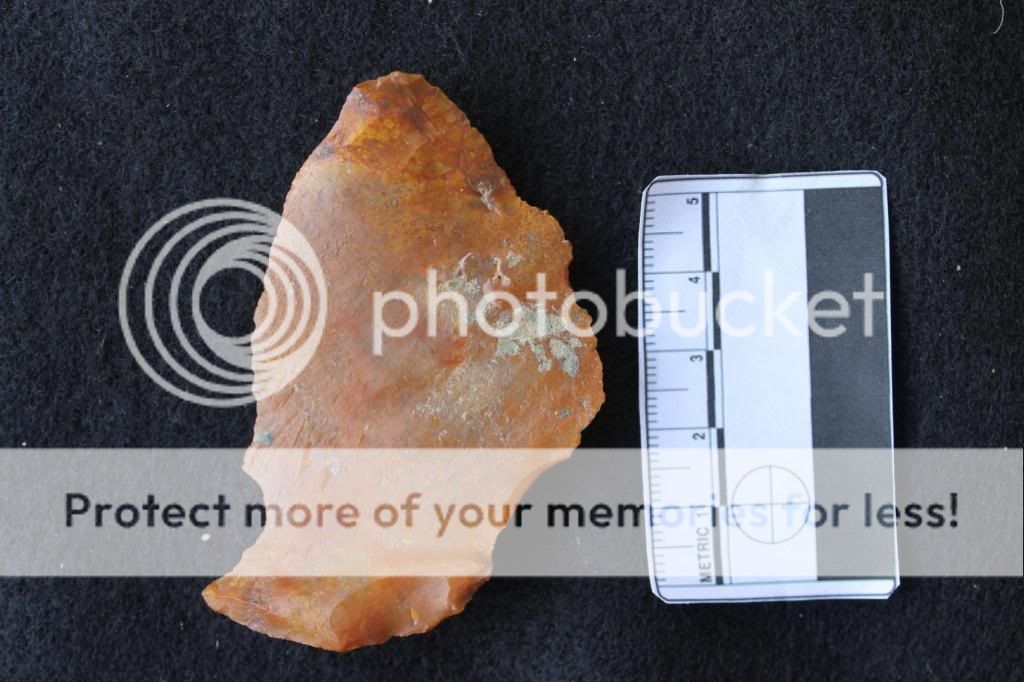
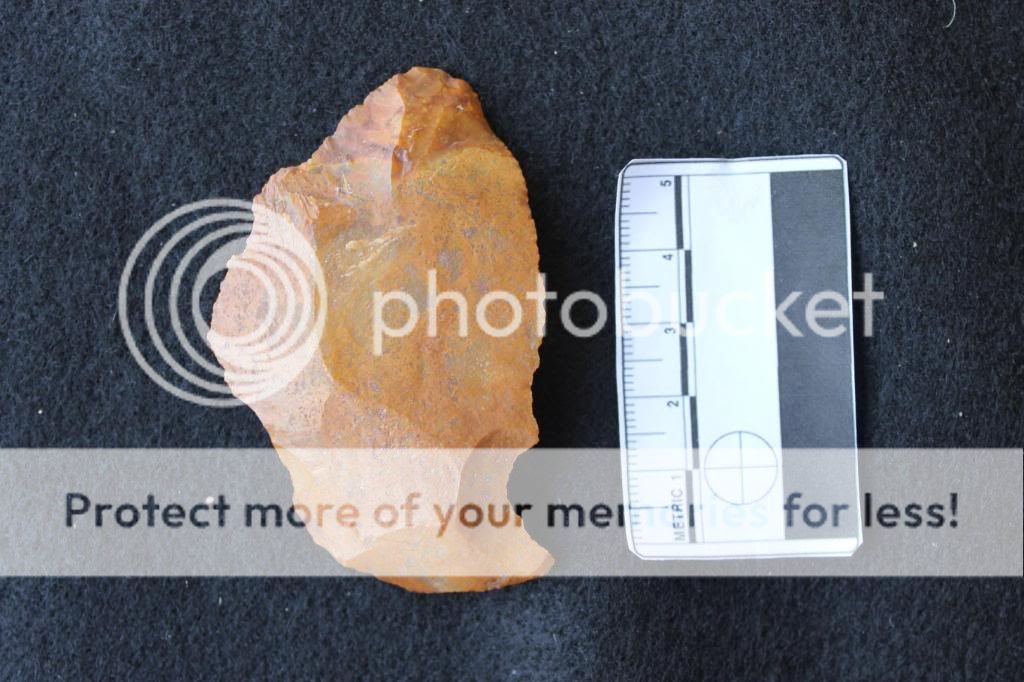
This piece is another trimmed tool.
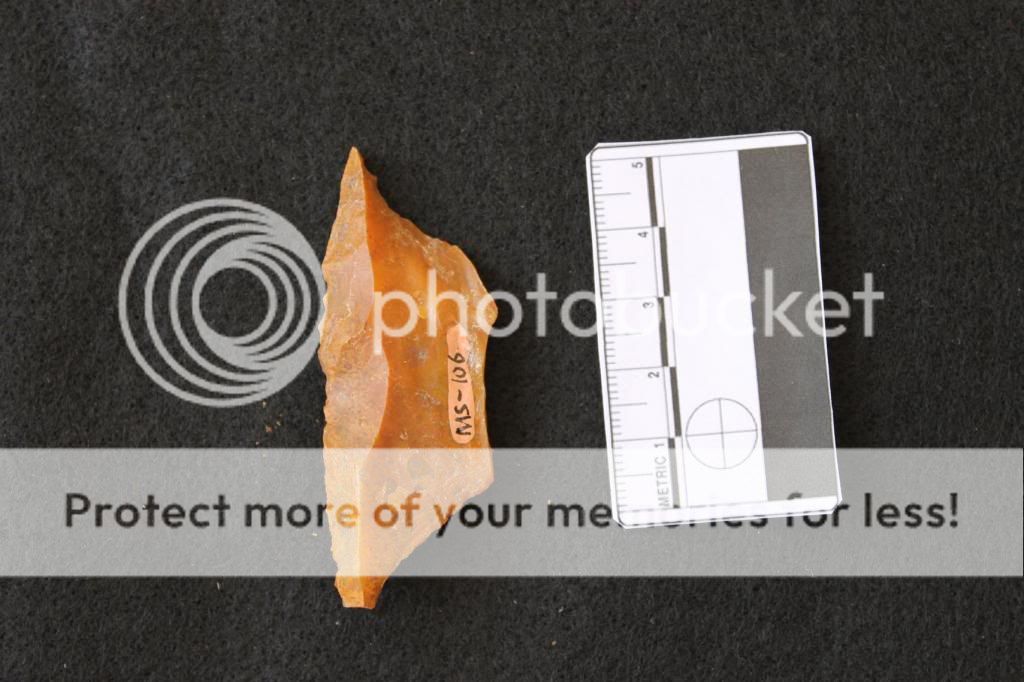
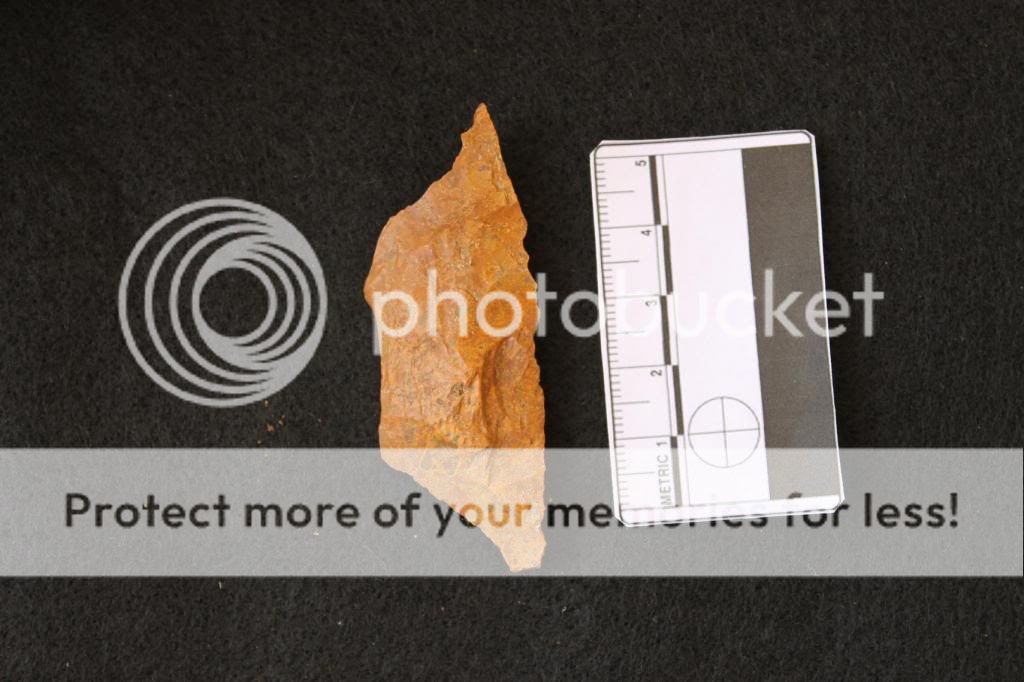
A thin reduction outrepasse.
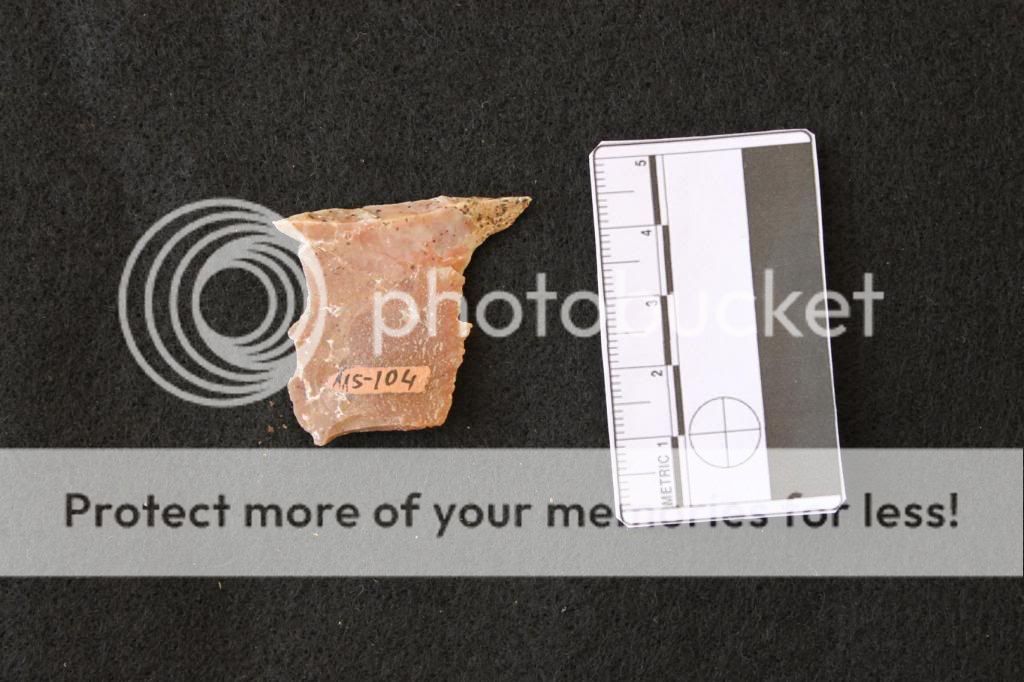
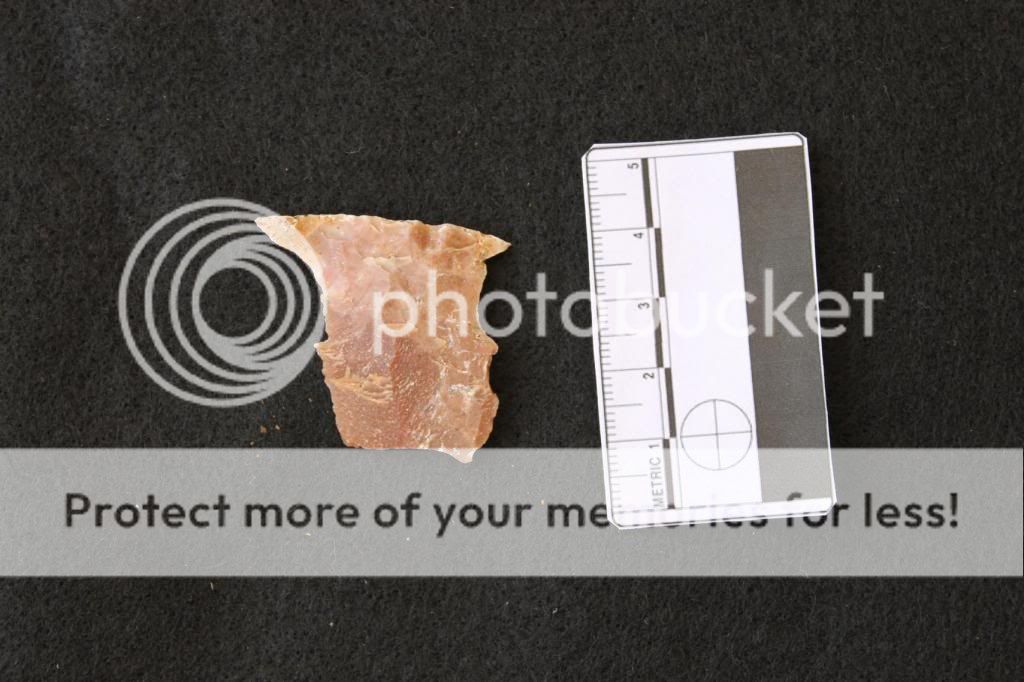
This piece is a broken clovis knife from Kentucky. The outrepasse flaking is some of the coolest I've seen. Pieces like this only exist for a little while during the knapping process, and are normally found when broken near a quarry. If they were away the quarry, both sides would have been reworked into tools or small points
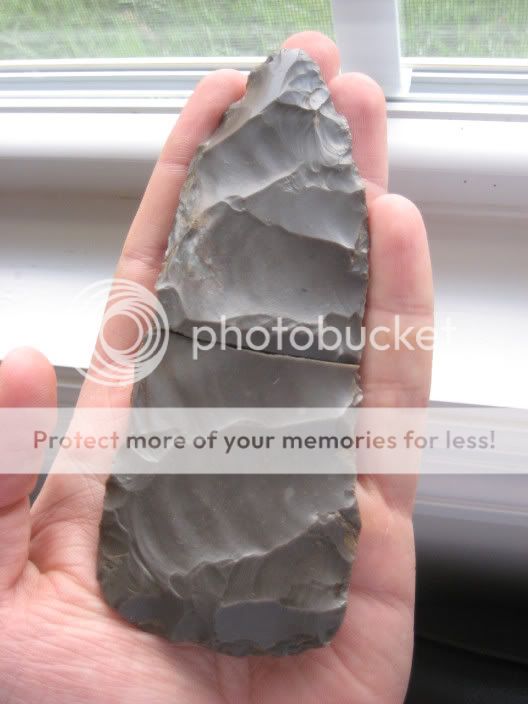
This piece was trimmed. The platform would be on the right side (trimmed off and edges ground), the blade edge is on the left. Inside view.

The same piece but showing the outside surface.

This is a outrepasse flake, platform at the top, opposite edge at the bottom.


This piece is another trimmed tool.


A thin reduction outrepasse.


This piece is a broken clovis knife from Kentucky. The outrepasse flaking is some of the coolest I've seen. Pieces like this only exist for a little while during the knapping process, and are normally found when broken near a quarry. If they were away the quarry, both sides would have been reworked into tools or small points

Similar threads
- Replies
- 54
- Views
- 3K
- Suggestion
- Replies
- 5
- Views
- 861
Users who are viewing this thread
Total: 2 (members: 0, guests: 2)

